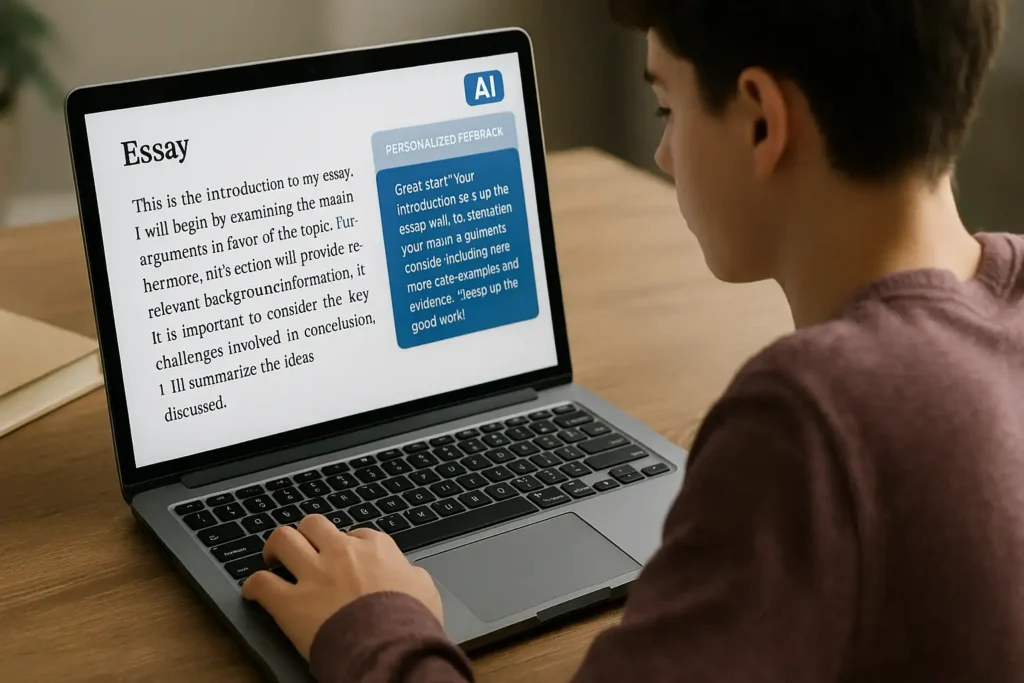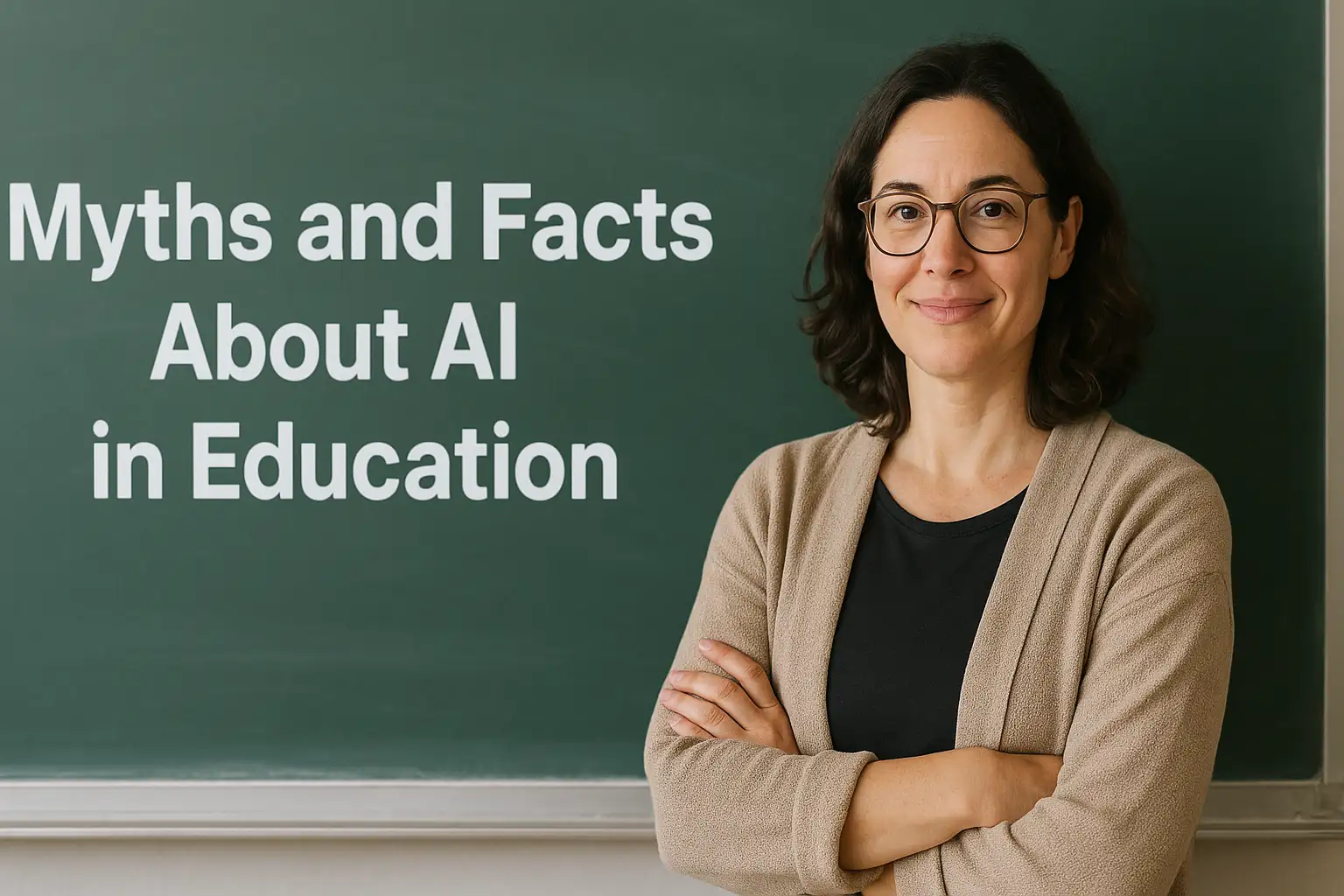Artificial Intelligence (AI) is increasingly becoming a part of our daily lives, including in education. However, many people still have doubts and misconceptions about how AI works in the classroom. Some believe it will replace teachers, while others think it’s too complex or even dangerous. In this article, we’ll explore the main myths and facts about AI in education, using simple language and practical examples to help you understand this important topic.
Myths and Facts About AI in Education
Myth 1: AI Will Replace Teachers
One of the most common fears is that AI will take over the role of teachers. However, this is not true. AI is designed to assist teachers, not replace them. It can handle repetitive tasks like grading or organizing materials, allowing teachers to focus more on engaging with students and addressing their individual needs. For example, AI can help identify students who are struggling and suggest personalized resources to help them improve.
Many people believe that AI will replace teachers, but experts at UNESCO emphasize that the technology should serve as a support tool, not a substitute.
👉 Explore whether AI can replace traditional teaching in education and how it can complement classroom teaching to enhance learning.
Myth 2: AI Is Too Complex for Everyday Use
Some people think that AI is too complicated to be useful in everyday teaching. In reality, many AI tools are user-friendly and designed to be easily integrated into classrooms. For instance, some platforms can generate quizzes or reading materials tailored to a student’s level, making it easier for teachers to provide personalized instruction.
Myth 3: AI Is Only for Tech-Savvy Schools
There’s a belief that only schools with advanced technology can benefit from AI. However, AI tools are becoming more accessible and affordable, allowing schools with limited resources to take advantage of them. Even simple applications, like language translation tools, can make a significant difference in diverse classrooms.
Myth 4: AI Encourages Cheating
While it’s true that AI can be misused, it’s also a powerful tool for promoting academic integrity. AI can detect plagiarism and help teachers monitor student progress more effectively. Moreover, by providing personalized feedback, AI encourages students to engage more deeply with the material, reducing the temptation to cheat.
Myth 5: AI Lacks Human Touch
Some argue that AI cannot provide the emotional support that teachers offer. While AI cannot replace human empathy, it can free up teachers’ time by handling administrative tasks, allowing them to spend more time connecting with students. This combination of AI efficiency and human compassion can enhance the overall learning experience.

Myth 6: AI Is a One-Size-Fits-All Solution
AI is often seen as a rigid system that doesn’t account for individual differences. In fact, AI excels at personalization. It can analyze a student’s performance and adapt the content to suit their learning style and pace. This means that each student can receive a tailored educational experience that meets their unique needs.
Myth 7: AI Is Unreliable
Concerns about AI making mistakes are valid, but it’s important to remember that AI is a tool that complements human judgment. Teachers can review and adjust AI-generated content to ensure accuracy. Additionally, as AI technology continues to improve, its reliability increases, making it a valuable asset in the classroom.
Myth 8: AI Is Expensive
Cost is a common concern when it comes to implementing new technology. However, many AI tools offer free or low-cost versions suitable for educational purposes. Investing in AI can also save money in the long run by streamlining processes and improving student outcomes.
Myth 9: AI Is Only for STEM Subjects
AI is often associated with science and technology, but it has applications across all subjects. In language arts, AI can help with grammar checking and writing assistance. In history, it can provide interactive timelines and simulations. The versatility of AI makes it a valuable tool in any area of study.
Myth 10: AI Will Make Learning Impersonal
There’s a fear that AI will depersonalize education. However, by handling routine tasks, AI allows teachers to focus more on building relationships with students. Furthermore, AI can help identify students’ interests and learning preferences, enabling more meaningful and personalized interactions.
Key Points About Myths and Facts About AI in Education
- AI assists teachers, enhancing their ability to support students.
- User-friendly AI tools are accessible to schools with varying resources.
- AI promotes academic integrity through plagiarism detection and personalized feedback.
- Personalization is a strength of AI, catering to individual learning needs.
- AI complements human interaction, allowing teachers to focus on student engagement.
- Cost-effective AI solutions are available for educational institutions.
- AI applications span all subjects, not just STEM.
- AI enhances personalization, making learning more engaging and effective.
Conclusion
Understanding the myths and facts about AI in education is crucial for embracing its potential benefits. AI is not a threat to teachers but a tool that can enhance their effectiveness and enrich the learning experience for students. By dispelling misconceptions, we can focus on integrating AI thoughtfully and ethically into our educational systems.
As we continue to explore and implement AI in classrooms, it’s essential to maintain a balance between technology and the human touch that is vital to education. Teachers, students, and AI can work together to create a more personalized, efficient, and engaging learning environment.
What are your thoughts on AI in education? Have you encountered any of these myths? Share your experiences and opinions in the comments below!

